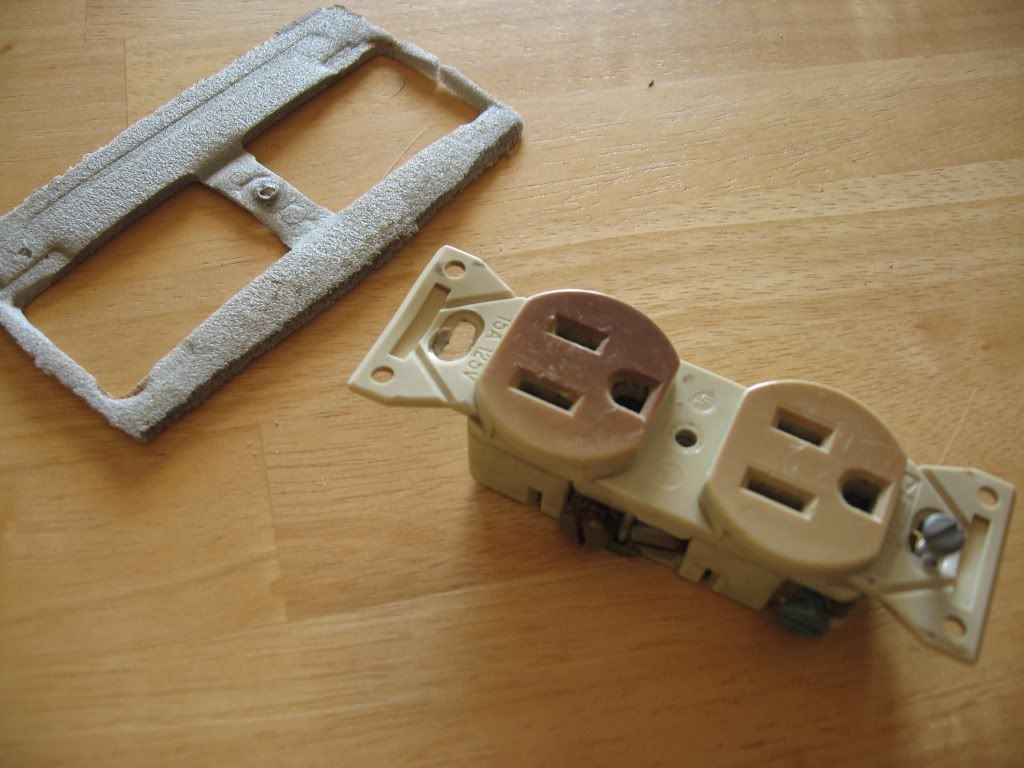geochurchi
Senior Member
- Location
- Concord,NH
- Occupation
- Retired electrician
Hi All, when using plastic boxes and plastic plates do the bond wires still need to be connected to the devices?
Geo
Geo
Hi All, when using plastic boxes and plastic plates do the bond wires still need to be connected to the devices?
Geo
Find the rare device that has a non metallic yoke and then you shouldn't need to bond it.
You are saying that the EGC and Bond wire are the same?
Geo
I'll buy that if there is something to bond, like the equipment grounding terminal of a receptacle that will pass the grounding connection on to the cord/plug that plugs into it. But should you have a switch with a non metallic yoke - what is there for ungrounded conductors to fault to? An EGC terminal that isn't conductive to anything but itself? Waste of time and money to even put the thing on the device IMO.I disagree. He said do the bond wires still have to be connected to the devices,,,, more commonly referred to as an Equipment grounding conductor,,,,, so regardless of wether the box is plastic, the cover is plastic, and the yoke is plastic,,, you still need to connect the EGC to the deivice to clear a ground fault.
JAP>
I'll buy that if there is something to bond, like the equipment grounding terminal of a receptacle that will pass the grounding connection on to the cord/plug that plugs into it. But should you have a switch with a non metallic yoke - what is there for ungrounded conductors to fault to? An EGC terminal that isn't conductive to anything but itself? Waste of time and money to even put the thing on the device IMO.
So you want to duke it out over definitions I see.I completely agree. It's just the way the original post is worded. Unless you've created your own bonding jumper by screwing a short piece of wire to a plastic box ( which would be useless)....there are no "bond wires" to begin with. Which led me to believe he may be talking about EGC's instead. I may be wrong.
JAP>
If you have more then one NM cable entering the box, splice all the EGC's together and then add a tail to the device, is that tail an EGC, a bonding jumper, or maybe even both?Plastic box, NM cable w/G, where's the bonding jumper?
I'll buy that if there is something to bond, like the equipment grounding terminal of a receptacle that will pass the grounding connection on to the cord/plug that plugs into it.
But should you have a switch with a non metallic yoke - what is there for ungrounded conductors to fault to? An EGC terminal that isn't conductive to anything but itself? Waste of time and money to even put the thing on the device IMO.
404.9 Provisions for General-Use Snap Switches.
(B) Grounding. Snap switches, including dimmer and similar
control switches, shall be connected to an equipment
grounding conductor and shall provide a means to connect
metal faceplates to the equipment grounding conductor,
whether or not a metal faceplate is installed.
Well I swear I once saw a non metallic bodied snap switch, just what is there to bond/ground if that is the case, unless they made provisions to have grounded metal screw catchers for the cover plate - then yes it must be grounded per the code you quoted, several years ago it didn't unless you were attaching a metal plate.You have no choice but to 'buy that' it is required.
It amazes me the work people putting into finding a reason to disagree with things posted on the internet.
The section continues and there are some exceptions but in a nut shell if there is a grounding means in the box and it is a standard snap switch you are grounding the switch either by a wire or by contact with a metal box.
So you want to duke it out over definitions I see.
IMO the wire between the device and the box and/or the incoming EGC technically can be considered either a bonding jumper or an EGC.
That wire alone is a bonding jumper but it bonds to the EGC effectively making it part of the EGC.
Find the rare device that has a non metallic yoke and then you shouldn't need to bond it.

Not so.....I have one of these in my collection but couldn't find it, so here is an Internet pic. Plastic yoke, bonding required.

And yes, the yoke is all plastic. They were made by Slater.
Not so.....I have one of these in my collection but couldn't find it, so here is an Internet pic. Plastic yoke, bonding required.

And yes, the yoke is all plastic. They were made by Slater.

